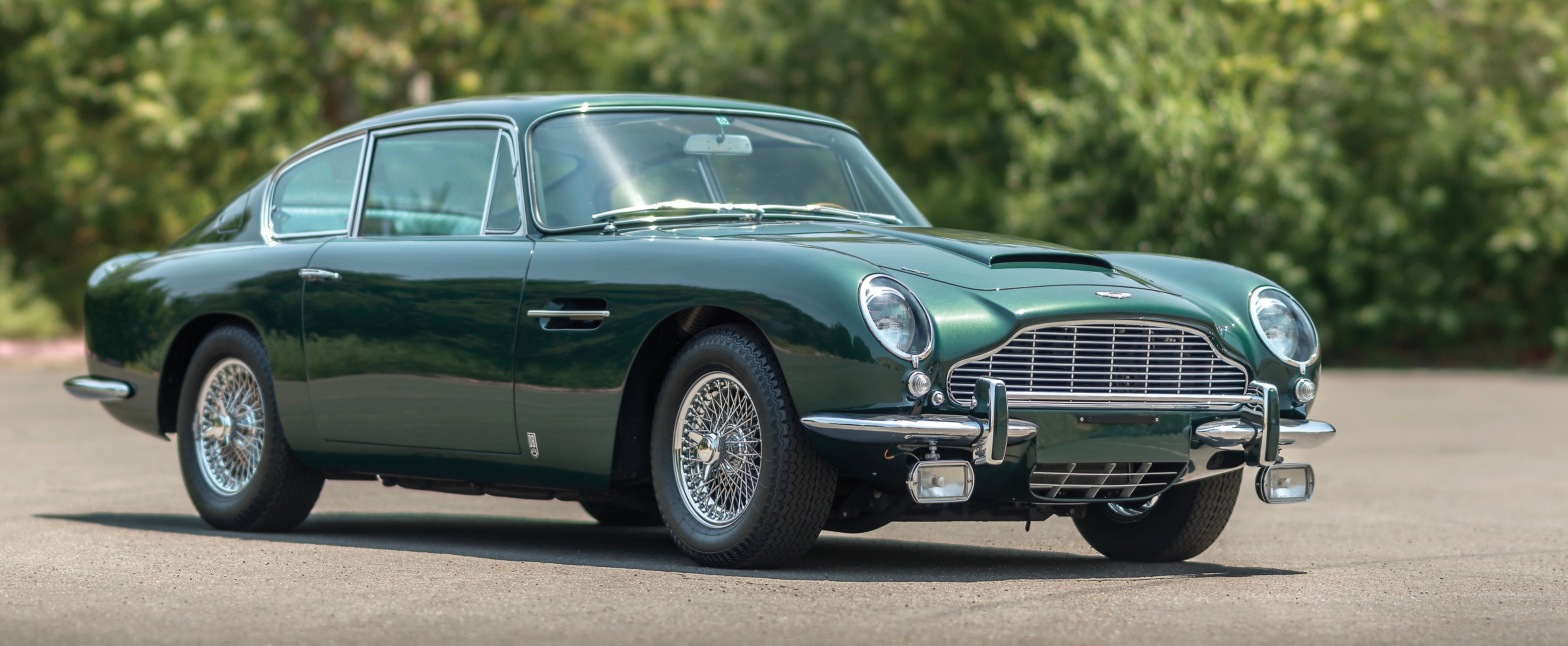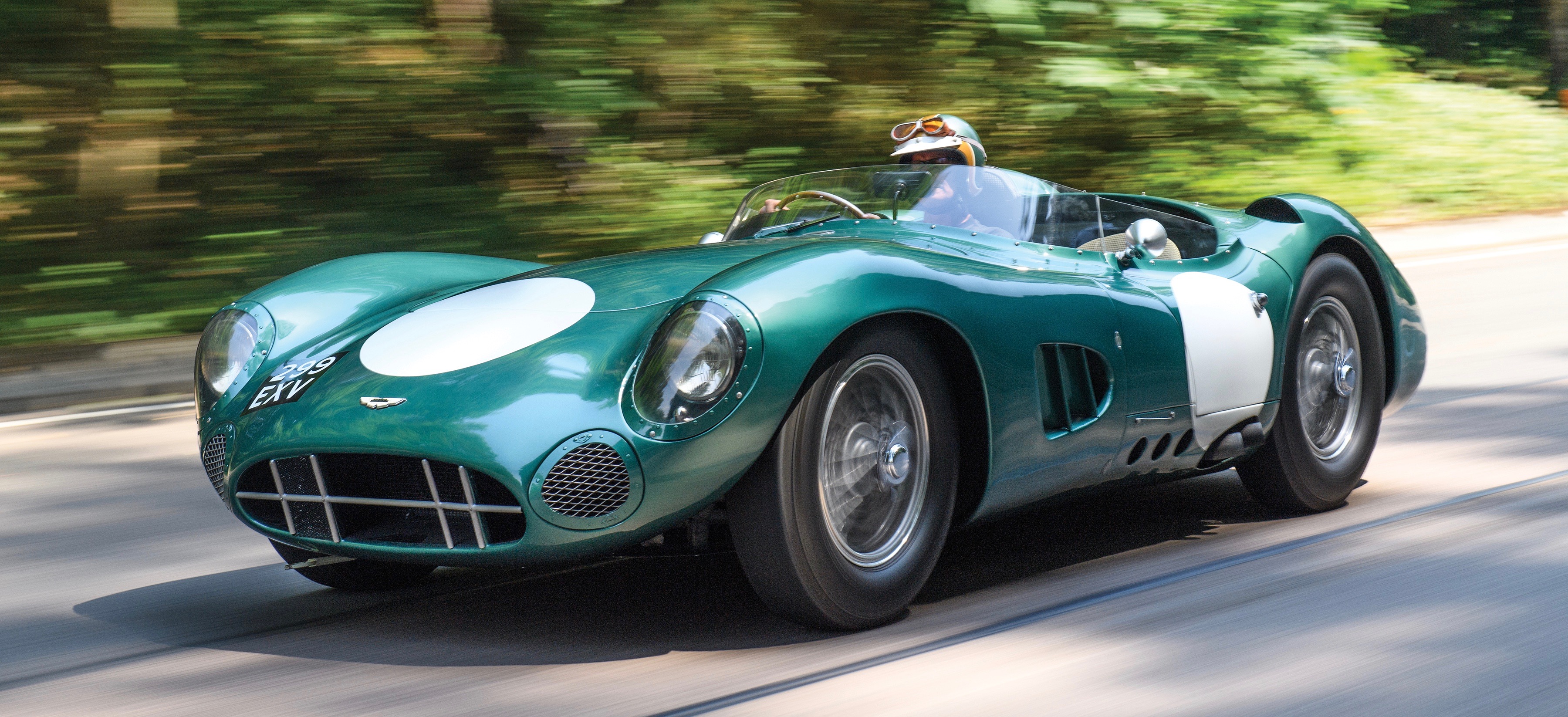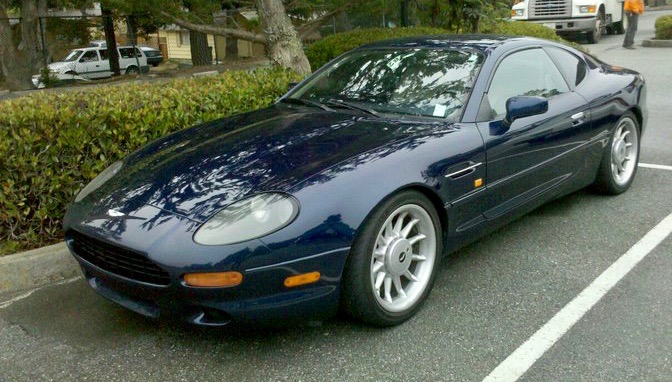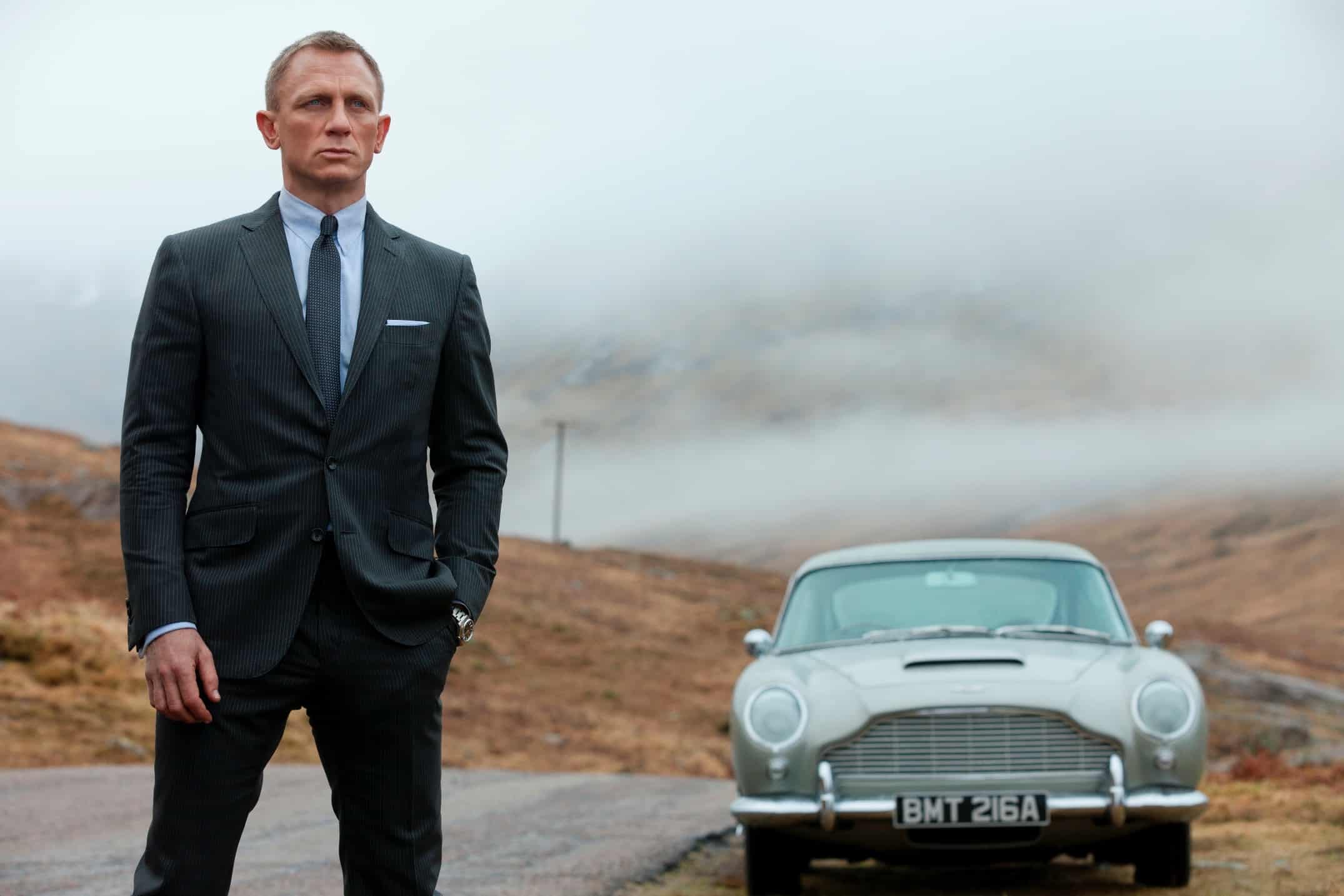Editor’s note: November is Import Month on the ClassicCars.com Journal. Get all the news you could ever need about Italian, German, English, French, Japanese and lots of other cars at our dedicated page.
Aston Martin. The name alone makes you think of James Bond, of Le Mans, and is emblematic of the golden age of sports and GT cars.
Over the past decade, the values of cars from Aston Martin have skyrocketed, with many models doubling and tripling in value. Even during the recession, Aston Martins held their value and — unlike Ferraris, Maseratis and Porsches — even continued to increase in value.

Here are three examples of the value trend, with data from the Hagerty Price Guide:
• In 2006, a No. 2 condition example of an Aston Martin DBS had a value of around $47,500. In 2009 during the market correction, it cost $45,000. In 2012, such cars cost $91,000. Today, that same car in now worth $148,000.
• Now consider the S2 V8 Vantage coupe. In 2006 the V8 Vantage in No. 2 condition could be bought for $98,000. In 2009, that same car would change hands for $126,000. Currently, that car is worth $254,000.
As a matter of fact, the S2 V8 Vantage coupe has increased in value for a dozen years in a row.
• The big winner, however, is the Aston Martin DB5. In 2006,you could get a No. 2 condition example for $248,000. During the downturn of 2008-09, that same car cost $350,000. Today, it likely will take $1.15 million to add one to your collection.
To underscore the increase in desirability of Aston Martins, consider that a 1971 Plymouth Hemi ‘Cuda coupe was selling for $1.1 million in 2006, dropped to $228,000 by 2009 and has climbed back to only around $400,000 today.
Or that a Ferrari 275 GTB 2-cam in No. 2 condition typically changed hands for $755,000 in 2007 but in 2009 had dropped in value to around $540,000. Today, they have soared to nearly $2 million.
So what has caused such stability and increase in Aston Martin values?

After discussing this trend with various Aston experts — a dealer, an auction specialist, a historian and the head of Astons Heritage car department — my conclusion is that there are three major reasons.
The first is the history of the marque. The second is the racing pedigree. The third is “the James Bond effect.”
“The market for Aston Martin cars will always put a premium on the DB5,” said Don Rose, the second-most interesting man in the world, former specialist at RM Sotheby’s and a serial Aston Martin owner. Rose has owned some of the greatest Astons in history, including one of the Holy Grail cars in the Aston Martin pantheon, a DB4 GT.
However, he added, “if it weren’t for 007, the DB5 would be the proverbial middle child and be the less-expensive model. The DB6 is the most refined and without the ‘007 effect’ would possibly be more valuable than the DB5.
“The DB5 is neither fish nor fowl, but this does not seem to matter,” Rose said. “It’s because of the most famous movie car tie-in that made the DB5 the most famous car in the world and continues to drive the market. The DB5 is the Ferrari 275 GTB of the Aston world.
“Ferraris tend to trade often, and these trades are market-driven, where Astons are more family heirlooms, and trade less frequently. As a result, these cars hold their values, making Astons a more stable car investment.”
Rose’s pick as the best buy on a classic Aston today is the DB6: “If you are looking for a market opportunity, the DB6 is anywhere from one-third to one-half the cost of a DB5, which happened during the downturn, which was an over-reaction. If you were to buy a car to take advantage of a market correction, the DB6 has over-corrected.”
Rose adds that,“The DB4 to me is the under-appreciated model.” He cites its sporting character and racing history. “In contrast, there is little more than one flavor of DB5, basically is it a Vantage or not. As a result, the more-informed collectors are looking for a DB4.”

Next, I spoke with Matthew Ivanhoe, owner of The Cultivated Collector, a collector dealership in Connecticut, and an expert in the Aston marque and also the owner of a DB4.
“Aston Martin cars are the gentleman’s sports car in a world of Ferrari craziness,” he said, adding that Aston Martins might especially appeal to “new collectors who have been in the hobby for 10 years and are looking for something that stands out. These cars are wonderful to see and to use and have wonderful heritage. The Astons check so many boxes in so many categories.”
Ivanhoe’s outlook on the future of the Aston market: ”I feel that the future is very, very bright. Things like the DB4GT and special edition cars all have wonderful futures with great legs. Someone with a DB6 auto coupe has been the beneficiary of a market that have taken these lesser examples upwards as well and cars like that are a bit flat today.”
Concerning the more-recent cars, “Astons such as the Vanquish, the last Newport Pagnel hand-built car, is not going to be as inexpensive as they are now much longer. The V12 Vantage also has headroom in today’s market due to limited production and an epic driving experience.”
As for opportunities in the market at the high end, “the AR1 and other modern Zagato cars are undervalued, especially the DB7 Coupe Zagato. On the lower end of the market, the DB7, especially in coupe form, represents an excellent value in today’s classic car market.”

Nick Candee is co-author of the magnum opus The Aston Martin DB4 GT and a historical expert on the marque.
“First, these cars have very good bones,” he said. “These are hand-built cars that were constructed with great precision and as a result are rebuildable all day long. When you look at the noble ingredients that go into it steel chassis with an aluminum body, what you get an amazingly built car.”
Another benefit, he said, is Aston Martin’s own historians, who make it easy to learn a car’s history, “making the odds of a fake Aston, say a fake DB4 GT showing up, virtually impossible, unlike the replicated Ferrari cars that sometimes turn up. In addition, the factory can also supply you a copy of your original build documents for any post-war Aston Martin.”
As to the James Bond effect: “The DB5 is arguably the most wonderful product placement of all time,” Candee said. “Also, the DB5 is a grand touring car. It is fast. The Wilton carpets make it relatively quiet. It has 2 filler flaps for fuel, and the driving experience is not to be underestimated.”
He offered a joke about the year when “all eight of the original five Ferrari Spiders were at Pebble.”
This is something that does not happen with Aston Martin classic cars, he noted.

Finally, I spoke with Paul Spires, president of Aston Martin Works, to get his perspective on why the classic Astons seem to be the most stable classic sporting cars in the market. Spires joined the company in the 1980s and has been through good years, bad years, very bad years and sees the future looking very good.
“You have to take into account the kind of owners who buy an Aston,” he said. “The Aston fits into their lifestyles and is not a status symbol. Also you take into account that there are a total of only 13,000 classic Astons in existence, and this is inclusive of the DB7 and the Vanquish. This leads to a very small market. This means it only takes a handful of heritage Astons to be sold to rock the values up in the market, which makes for more stable prices.”
He continues: “Aston has done something different with their Heritage car programming by setting up a global system to ensure that a heritage customer can get parts and service anywhere in the world. Aston has the ability to ship parts and mechanical specialists anywhere in the world to insure that Heritage Astons can always be repaired.”
In addition, Aston offers continuation cars such as the new DB4GT.
“These continuation series allows us to re-engineer parts and build better parts for the heritage cars, thus making these classic cars better than they were new but not taking away the feel of them still being classic automobiles,” Spires said.
“In the future, the interest in our Heritage cars will continue to increase due to a Heritage Aston having hug amounts of soul. Driving an Aston is like wearing a very fine suit or wristwatch, it just bring about an idea of well-being. Again it is not a lifestyle piece but one of the most beautiful and storied cars in the world.
“The next gen in emerging markets are very excited about the Heritage cars and are just discovering them. The effect on the rate of increased values due to these markets will be interesting. The reality of owning a driving a Heritage Aston is that every time you drive one of these cars, you are mobbed when you park it.”
Discussing the part that James Bond plays in the popularity of the Aston brand, Spires said, “You can’t underestimate the JB effect. Lord knows where Aston Martin would be without the placement of the DB5 in Goldfinger. Besides the placement in five different James Bond films, the DB5 is also one of the most beautiful cars sporting cars in the world, with perfect proportions, it is like the Mona Lisa of the automobile world.”
Spires’ pick for the best deal in the classic Aston market is the Vanquish.
“The Vanquish one of Ian’s (designer Ian Callum) best pieces and will have more interest in years to come.”
The additional fact that you can convert the SMG gearbox to a manual 6-speed for only around 20,000 pounds makes them a great value.

I’m among those who has great affinity for the Aston Martin brand. I’ve owned two, a 1969 DBS and a 1997 DB7 coupe, and I bought both because I’m also a James Bond fan.
Believe it or not, the best time I had was in the DB7 as I took it on a pair of cross-country road trips to Monterey.
When I owned the DB7 we were living in Chicago, which precluded winter driving. But I spent many hours behind the wheel while the car was parked in the garage. I remembered the epic high-speed runs in Nevada on those road trips and the people with questions about the cars everywhere I stopped for gas or food.
This is something that I have not done in any other car I have owned, even Ferraris or Bentleys. The newness never wore off of the Astons and I sold both to stupidly buy something that momentarily caught my eye. I will own another and I will do so soon.








In !980 I’m looking through a Hemming’s and see an Aston DB6 for sale in the U.K. I send an inquiry and receive a reply that the DB6 is sold but the seller sends me a photo of a 1965 DB5 he has in stock for $5,000. I have relatives in England so I could have been secure in knowing if it were as described. I decided I would pass as I really wanted a DB6. Well, I still have the photo but NOT the car or $1.5 million. Never got the DB6 either.
Dwight, my Uncle Robert Gordon Sutherland OWNED Aston Martin until 1947! At that time AM was struggling, I know only a very sketchy history of the company up to that time, obviously it’s documented but history usually records the obvious which is somewhat at odds with how my uncle portrayed it. Whilst David Brown is rightly hailed as the man behind the success of AM prior to which it was on its’ knees, he is quoted as saying he paid a lot for what in essence were run-down buildings, and outdated tooling. What he doesn’t say is that the deal included the final designs for the next new model. That became a racing success, if not a commercial one, paving the way for the following model which was undeniably advantaged by it’s forerunners’ success on the race circuit. My knowledge is sketchy but as I understand it, that was how it came about. My uncle told me he was screwed to the last penny on agreeing a final price, and whatever the facts there’s no doubt DB did well out of it. My Uncle rarely spoke of AM and never owned one thereafter. Had he gone into an equal partnership with DB, or possessed the finances and/or vision of DB, things might have turned out very differently.